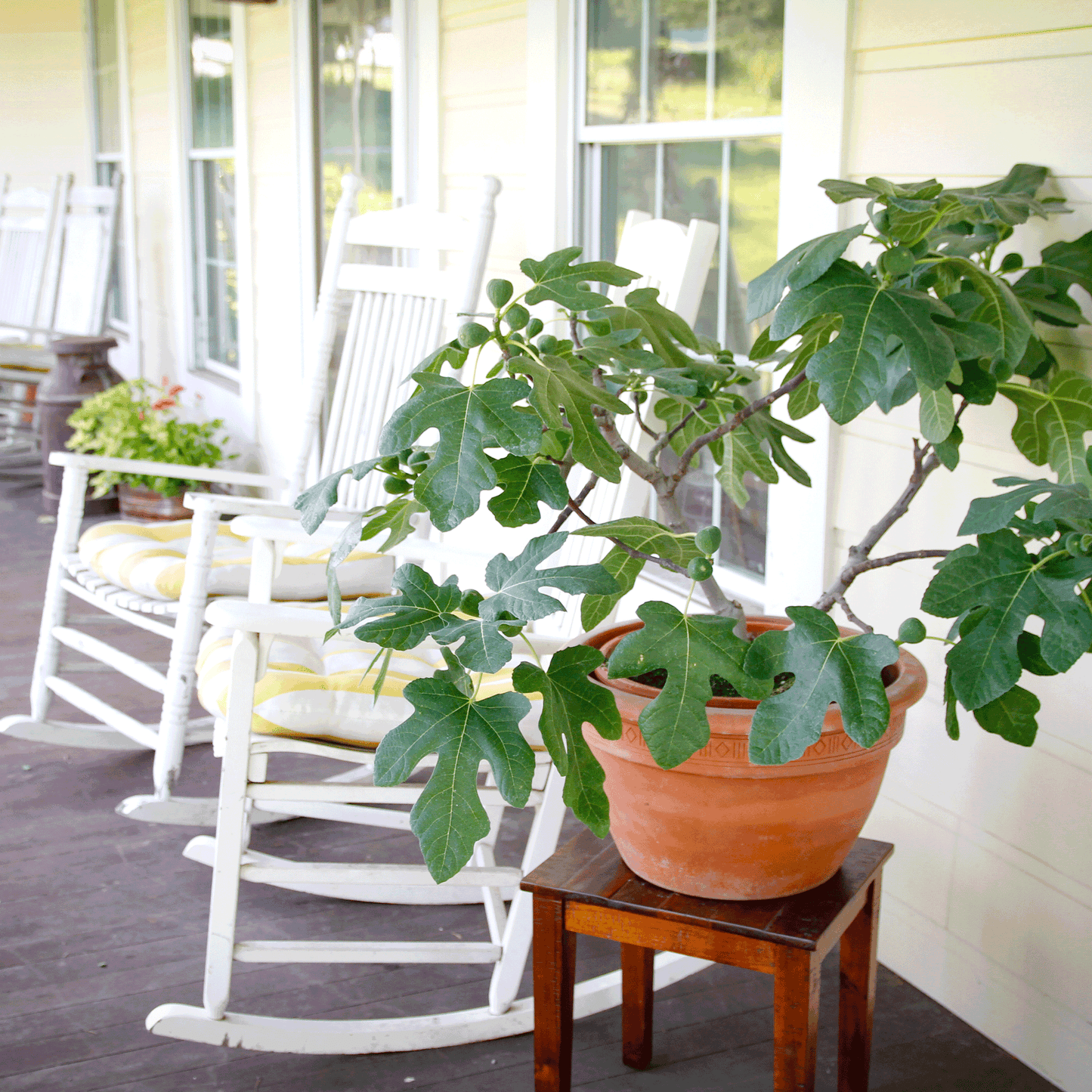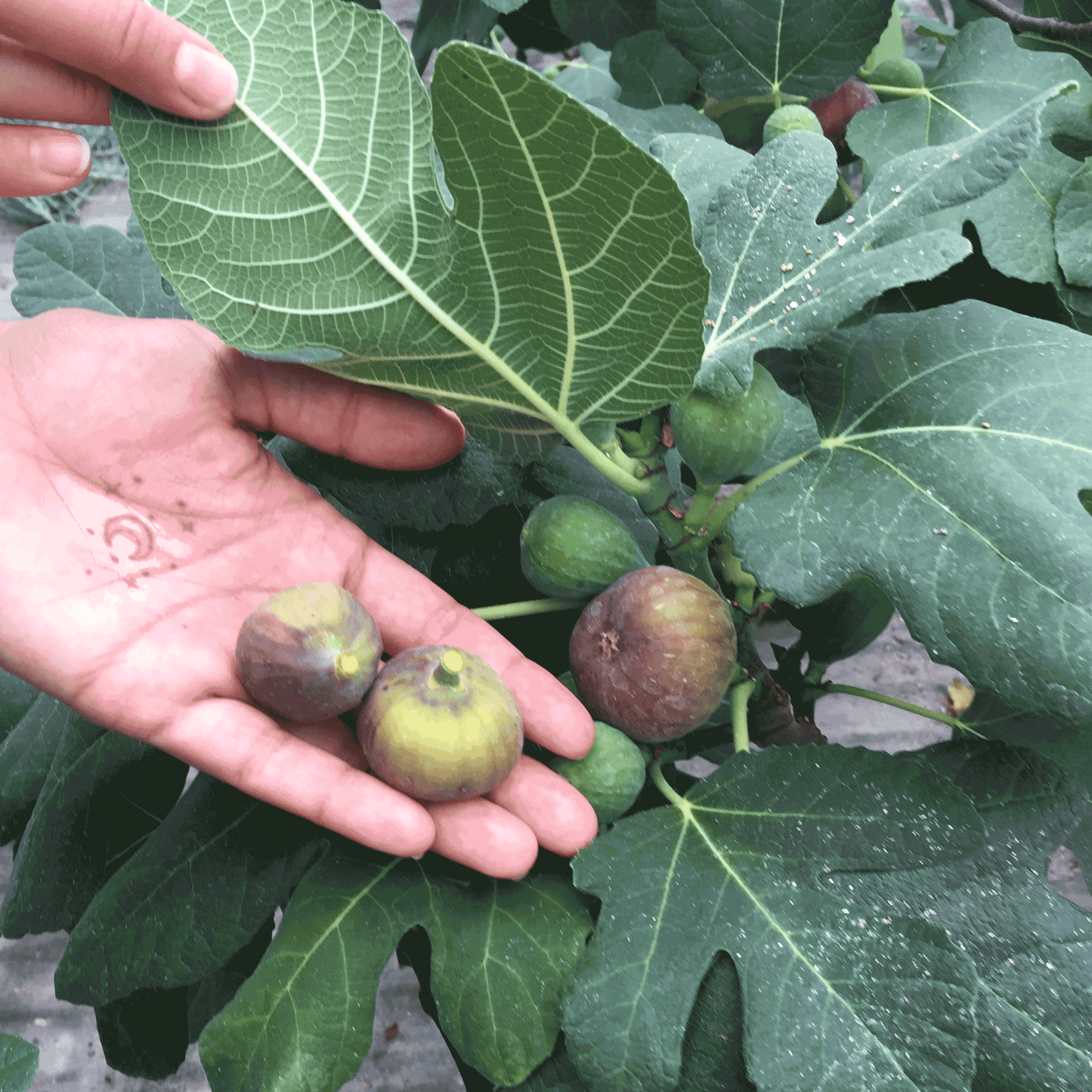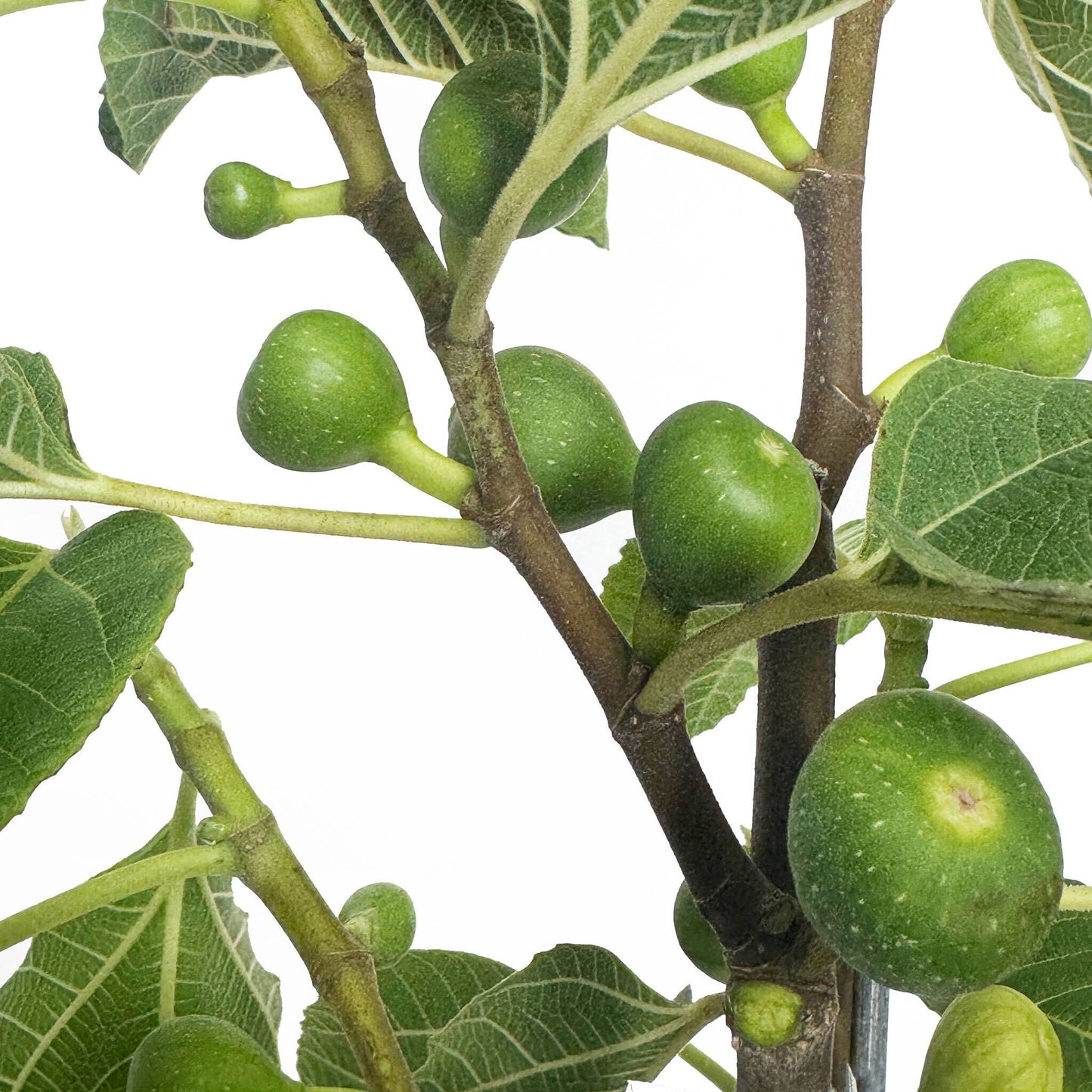Fignominal Fig
Fignominal Fig
SKU:EDI-FIG-FIG-NA-1QT
Meet Your New Fignominal Friend!
Introducing the Fignominal Fig – your compact companion for homegrown sweetness! This dwarf variety fits perfectly in any space, whether you've got a sprawling garden or a cozy balcony.
Why You'll Love the Fignominal Fig:
- Space-Saving Superstar: No room? No problem! This pint-sized plant packs a punch without taking up precious square footage.
- Easy-Peasy: Figs can be fussy, but not this little guy. It's low maintenance, making it a breeze to grow.
- Sweet Treats: Enjoy the fruits of your labor with delicious figs perfect for snacking, baking, or sharing—if you're feeling generous!
Planting & Care:
Simply plant your Fignominal Fig in well-draining soil, give it some sun, and watch it thrive. A little water here, some love there, and voilà – you're on your way to fig heaven!
Get Yours Today!
Don't wait to elevate your garden game. Add the Fignominal Fig to your cart now and get ready for a fig-tastic adventure in your own backyard!








Product Details
-
Product Category
Edibles
-
Product Subcategory:
Figs
-
Botanical Name:
Ficus carica 'Fignomenal'
-
Does Not Ship To:
AZ, OR
-
Mature Height:
28 in.
-
Mature Width:
5 ft.
-
Growing Zone:
5-10 outdoors
-
Indoor Growing:
-
Sunlight:
Full-Part Sun
-
Growth Rate:
Moderate
-
Harvest Time:
June - September
-
Bloom Time:
Spring

Planting Directions
<h2>Planting Fignominal Fig</h2>
<p>To plant a Fignominal Fig, follow these steps:</p>
<ul>
<li>Select a location with full sun and well-draining soil.</li>
<li>Dig a hole twice as wide and the same depth as the root ball.</li>
<li>Place the fig tree in the hole, ensuring it's at the same depth it was in the pot.</li>
<li>Backfill the hole with soil, gently tamping down to remove air pockets.</li>
<li>Water thoroughly after planting to settle the soil.</li>
<li>Mulch around the base to retain moisture and regulate soil temperature.</li>
</ul>
<h2>Care and Maintenance</h2>
<p>For ongoing care:</p>
<ul>
<li>Water regularly, especially during dry spells, to keep the soil moist but not waterlogged.</li>
<li>Fertilize with a balanced fertilizer after new growth appears and every 4-6 weeks during the growing season.</li>
<li>Prune in late winter to remove any dead or diseased branches and to shape the tree.</li>
</ul>
<h2>Fertilization and Pollination</h2>
<p>Figs typically self-pollinate, but for improved fruit set:</p>
<ul>
<li>Ensure there are other fig trees nearby to increase pollination chances.</li>
<li>Attract pollinators by planting flowers or avoiding pesticide use.</li>
</ul>
<h2>Harvesting</h2>
<p>To harvest figs:</p>
<ul>
<li>Wait until the fruit droops on the stem and the skin is soft to the touch.</li>
<li>Pick the figs gently to avoid bruising the fruit.</li>
<li>Harvest regularly as figs ripen at different times.</li>
</ul>
<p>Remember, each plant is unique and may require slight adjustments in care. Monitor your fig tree and adjust water and fertilization as needed.</p>

FAQs
<h2>FAQs for the the Fignominal Fig</h2>
<ol>
<li>
<strong>How do I plant a Fignominal Fig tree?</strong>
<p>Planting a Fignominal Fig tree is straightforward if you follow these steps:</p>
<ul>
<li>Choose a sunny spot with well-draining soil. Figs need about 6 to 8 hours of sunlight daily.</li>
<li>Dig a hole twice as wide and just as deep as the root ball of your fig tree.</li>
<li>Place the tree in the hole, spreading the roots gently. Ensure the base of the tree is level with the soil surface.</li>
<li>Backfill the hole with soil, tamping down gently to remove air pockets.</li>
<li>Water thoroughly after planting to settle the soil around the roots.</li>
<li>Mulch around the base to retain moisture and regulate soil temperature.</li>
</ul>
</li>
<li>
<strong>What is the best fertilization schedule for a Fignominal Fig tree?</strong>
<p>To ensure your Fignominal Fig tree thrives, follow this fertilization schedule:</p>
<ul>
<li>Apply a balanced 10-10-10 fertilizer in early spring before new growth begins.</li>
<li>Repeat fertilization every 4-6 weeks through the growing season, stopping two months before your first expected frost to prevent new growth that won't survive the winter.</li>
<li>Always water your tree after applying fertilizer to help distribute the nutrients to the roots.</li>
</ul>
</li>
<li>
<strong>How do I ensure proper pollination of my Fignominal Fig tree?</strong>
<p>Fignominal Figs are generally self-pollinating, but you can encourage better fruit production by:</p>
<ul>
<li>Planting more than one fig tree if space allows, as this can increase pollination rates through cross-pollination.</li>
<li>Attracting pollinators such as bees and birds to your garden by planting a variety of flowering plants.</li>
<li>Ensuring your fig tree is not overly shaded, as more sunlight encourages better fruit production.</li>
</ul>
</li>
<li>
<strong>When and how should I harvest Fignominal Figs?</strong>
<p>Harvesting your Fignominal Figs at the right time is crucial for the best flavor:</p>
<ul>
<li>Wait until the fruit droops on the branch and the skin changes color; this indicates ripeness.</li>
<li>Gently twist the fig off the branch or use pruning shears to cut the stem close to the fruit.</li>
<li>Harvest in the morning if possible, when the fruit is cool.</li>
<li>Consume fresh figs quickly, as they spoil within 7-10 days even when refrigerated.</li>
</ul>
</li>
<li>
<strong>How do I protect my Fignominal Fig tree during winter?</strong>
<p>Protecting your Fignominal Fig tree during winter is essential, especially in cooler climates:</p>
<ul>
<li>Wrap the tree with burlap or a tree blanket if temperatures frequently drop below freezing.</li>
<li>Apply a thick layer of mulch around the base of the tree to protect the roots from freezing temperatures.</li>
<li>If potted, move your fig tree to a sheltered location like a garage or basement where it remains cool but frost-free.</li>
<li>Reduce watering in the winter, as the tree requires less moisture during dormancy.</li>
</ul>
</li>
</ol>









